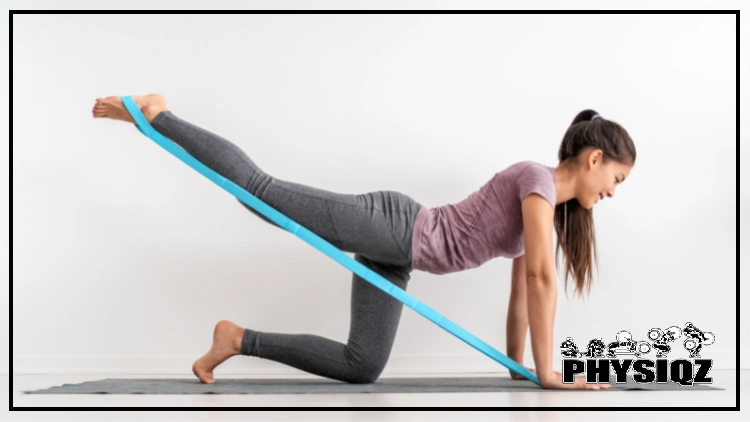
A great glute workout is vital when it comes to growing and sculpting the buttocks, but some lower glute exercises are better than others.1
Lifters who want to build their glute muscles are advised to read the list below for an analysis of the best exercises to target this muscle group, which consists primarily of the gluteus minimus muscle in the buttocks.
Not only will lifters be provided with the best exercises that are backed by science. They will also have insight into the incredible before and afters of those managing to achieve the ideal lower glutes, as well as access to a workout plan targeting the lower glutes that has been proven to get results.
Can You Specifically Tone & Target the Lower Glutes? Is Spot Training Possible?
When it comes to the question of “spot training”, or working out only a certain part of the muscle, lifters should know that it isn’t possible. This is because movement requires the entire muscle rather than just part of a muscle.
That being said, certain muscles can be targeted more with the right exercise to try to maximize muscle growth in that area.
So while it’s not possible to technically spot train the lower glutes, there are still exercises to emphasize the gluteus minimus muscle, which is located on the lower portion of the buttocks. Lifters should keep in mind that the glutes are a complex muscle system, and every glute exercise discussed below will technically target all three gluteal muscles.
However, the prime focus will be on the gluteus minimus to specifically target the lower buttocks and obtain a v shaped butt appearance.
Lifters should also remember that the best way to for muscular hypertrophy, or muscle size and strength building, is through the use of appropriate loading, or the use of weights, reps, and sets to challenge the targeted muscles until fatigued. Studies have found moderate to maximum loading to be most beneficial for muscular hypertrophy.2
While stability exercise might technically engage the gluteal muscles, it won’t promote the hypertrophy necessary to really improve the size of this muscle group.
Check out the information below to know how to target the under buttocks, and learn how to turn a square bum into a round one.
Glute Anatomy, Function & Benefits of Working Out the Butttocks
In order to better understand the exercises for the lower glutes and workout programs discussed below, it’s important to briefly review the anatomy of all three gluteal muscles and the benefits of training each one.
Upper Glute (Gluteus Medius): The gluteus medius is technically the upper glute muscles. Following an upper glute workout full of upper glute exercises is key for hitting this muscle group.
The gluteus medius is located at the top of the buttocks area, and is responsible for leg abduction or movement away from the body’s midline. It also helps to support the hip during rotation and flexion, making it vital for stability of the joint.
This muscle is what a lifter will want to target if they want to build the upper glutes. It also helps with supporting the hip joint, which can be weakened due to bad sitting posture.
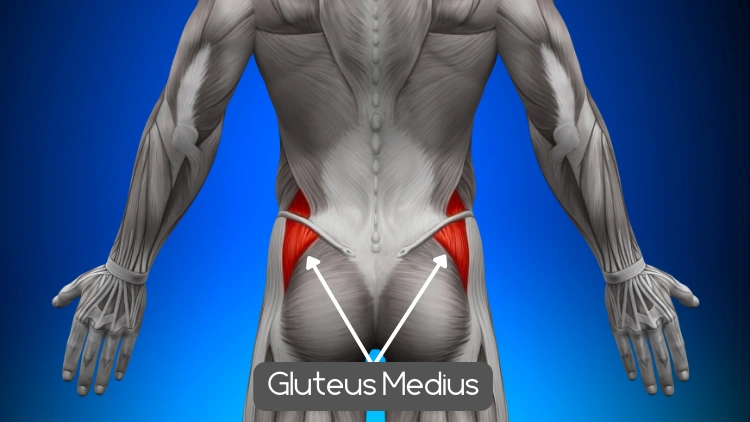
Source: decade3d via Canva.com3
Mid or Center Glute (Gluteus Maximus): The mid or center glutes is known as the gluteus maximus muscle, and is the largest of the three glutes. Its primary function is to extend and rotate the hip, as well as supporting leg abduction and adduction or moving the leg away and toward the body’s midline.
The benefits of training this muscle is supported hip positioning and resulting postural improvement, as well as muscle balancing. Also, because this muscle is so large, it’s great to target if a lifter is wanting to improve the overall size of the buttocks.
To hit this muscle, lifters should try incorporating a back squat workout into their routine.
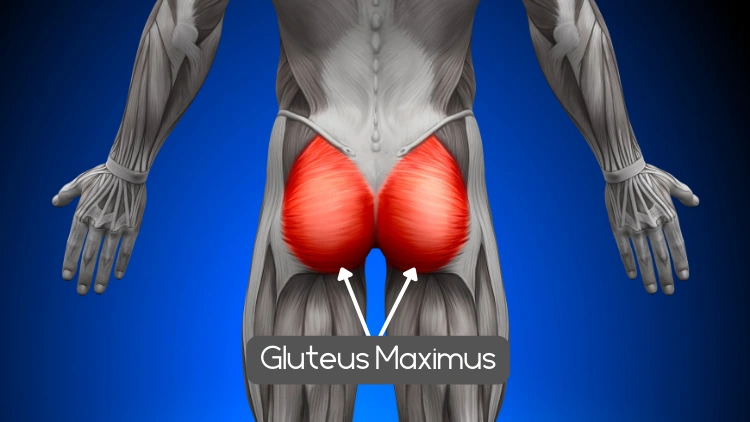
Source: decade3d via Canva.com4
Lower Glute (Gluteus Minimus): Finally, the lower glute muscle or gluteus minimus. This muscle is the primary focus during exercises targeting the lower glutes, and is found at the lower part of the buttocks and is responsible for abduction, hip stabilization, and internal rotational movement.
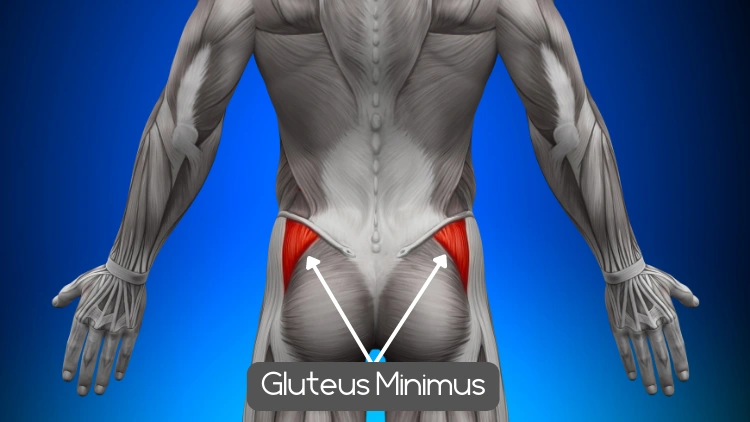
Source: decade3d via Canva.com3
By targeting this muscle, a lifter can improve the size and shape of the buttocks especially in the lower portion of the posterior. Furthermore, it’s important for stabilization, muscle balancing, and overall hip functioning.
What Exercises Lift Up a Low Bum the Best?
When it comes to which exercises for the lower glutes work the best, the answer is the ones that involve compound movements, or in other words, involve at least two joints across the body. These exercises for lower glutes have been scientifically proven to maximize muscular hypertrophy, or size and strength, as compared to exercises that isolate and only cross a single joint.5
Furthermore, these exercises are the most efficient, because the dual action movement will target two muscle groups instead of just one. Compound movements are the best way to get the most out of a workout.
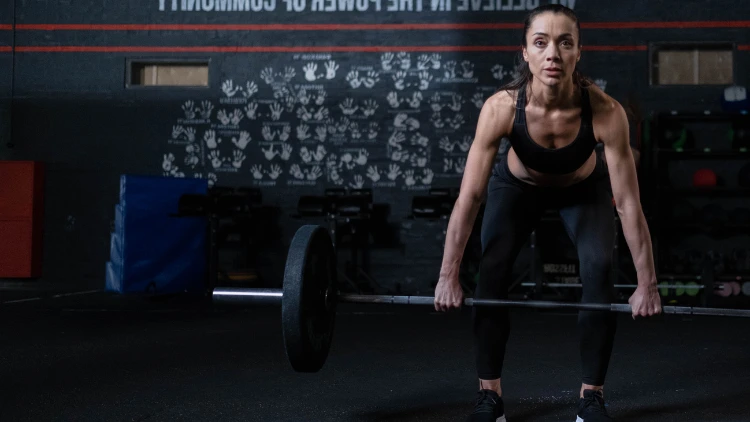
Source: cottonbro via Pexels6
Finally, these all fall into functional movement categories, which will help a person see results in their day to day life. This will include better posture during sitting and standing, ease of movement, and carryover of strength.
By using these glute targeting movements, a lifter is guaranteed to see results such as improved strength, a lifted and toned appearance, and increased glute size.
- Squats
- Deadlifts and RDLs
- Hip Thrusts and Glute Bridges
- Lunges and Lateral Lunges
- Step Ups
The Top 16 Lower Glute Exercises Proven to Lift Your Booty & Provide a Rounder Butt
Below is a comprehensive list of the best lower glute exercises that specifically target the gluteus minimus muscle. As a result of consistent hand work, lifters should expect to see results that include a lifted and toned buttocks, as well as the appearance of the highly coveted heart shaped butt.
Exercises 1-6 are considered isolation exercises that will only target one specific muscle group, while the remaining exercises are compound movements that will hit multiple muscle groups.
1. Standing Hip Abduction
This exercise is ideal to isolate the glute muscles, specifically the gluteus minimus and medius. It can be completed lying on one’s side or standing up with a variety of resistance used on the resistance band.
The standing position will better target a person’s balance and stability during the exercise, but research shows that the gluteus minimus activation aids in hip and leg stabilization.7
For the standing version, stand with feet shoulder length apart and flat on the floor. Place a taught band above the knee joint that is an appropriate resistance.
With hands on hips, the lifter will then shift weight to one leg while moving the other to push their leg away from the side of the body to full range of motion. To complete the rep, return to the start position.
https://www.youtube.com/watch?v=1G9DCLNvJvw
2. Side Lying Hip Abduction
This exercise has the same benefits of the above, but is completed lying on the floor instead of standing. For side lying abductions, put the resistance band above the knee and lay on one side on a mat.
Next, simply lift one leg towards the ceiling, pause, and slowly return to the starting position to complete one rep.
3. Cable Hip Abduction
This exercise is similar to the banded hip abduction movements, but will better challenge the balance and stability due to more resistance being able to be added to the exercise.
The lifter should start by placing the cable ankle cuff on their ankle and setting the desired weight. Next, they will create tension on the cable and stand shoulder length apart.
For the movement, the lifter will shift to one leg and move their other leg away from the body to their full range of motion before turning to the start with feet together. This is one rep of the exercise.
4. Fire Hydrants
This floor based exercise focuses on hip abduction, directly hitting both the gluteus medius and minimus muscles. For beginners who are new to lifting weights, body weight fire hydrants might be best.
But those wanting to up the intensity can also add resistance to this exercise through the use of resistance bands.
First, a person will get in position by moving onto their mat with their hands and knees, or a quadruped position. Next, they will then lift one leg outwards through the full range of motion.
Their knee will also be bent to 90 degrees of flexion. They will then move their leg back to where they started, on all fours.
This might resemble a dog lifting their leg, and is guaranteed to this the glutes.
5. Abduction Machine
This hip abduction machine, muscles worked will technically target all three of the glutes, but because the primary function of the gluteus minimus is abduction, this muscle will be specifically engaged. Due to this, the hip abduction machine can be an ideal exercise to hit the underbutt.
It’s also an isolated and seated exercise, limiting the risk of injury and making it ideal for those who struggle with balance.
To do this exercise properly, simply sit on the machine with the knee pads resting on the lateral or outside of the machine and the feet placed properly on the foot pedals. Once in the correct position, the lifter should push their legs open and away from the body.
Pause at the end range of motion before slowly returning to the start position.
6. Lateral Band Walking
This is a great exercise to hit the glutes, making the under butt or lower glute more tight and toned. To do this exercise, choose a resistance band and place it around the thighs above the knee.
Make sure the band is taut.
Next, simply step to the side to move the designated amount of distance. Keep stepping with the same leg until the number of reps are complete.
Then turn around, and step with the alternate foot to hit the same muscle for the other leg.
7. Belt Squats
Just as the squat bar path can impact a workout, using a belt squat can too. The belt squat decreases activation of the gluteus medius and maximus, and increases focus on the gluteus minimus.8
It also takes pressure off of the spine during squatting and is even considered as the number 1 reverse hack squat alternative. This makes the exercise ideal for targeting the lower glutes.
For a total glute workout, lifters might find more success with back squats.
To complete a belt squat, load the desired weight to the machine, attach the belt, and then line up next to the machine with feet shoulder or hip distance apart. Next, squat down until the thighs are parallel to the ground.
Then slowly return to the starting position.
8. Squats
Squats are one of the best exercises to build the glutes because they target all three gluteal muscles. They are also a compound and functional exercise and a compound movement, which will maximize muscle growth and hit multiple muscle groups at the same time.
This leads to more efficiency during a workout.
Squatting will have a similar form to the belt squats above, just without the machine. Simply keep the feet shoulder length apart, bend at the knees until parallel with the floor, and slowly return to the start position for one rep.
Weight placement is important to keep in mind. Lifters wanting to hit the quads during this exercise should try a squat front variety, while those wanting to focus on the under butt through glute and hamstring work should move the bar to rest on the back.
9. Lateral Lunges
Lateral lunges are a great way to specifically target the gluteus minimus muscle. Plus, this exercise is versatile and can be used with body weight, dumbbells, a barbell, or resistance bands to help lifters achieve the appropriate challenge for this body.
To complete a lateral lunge, start with feet shoulder length apart. Step one foot out to the side, or laterally, and squat down so the other thigh is roughly parallel to the floor.
Repeat with the other leg as well.
10. Step Ups
Step ups are another compound exercise that help to build specifically the gluteus minimus, in addition to the rest of the gluteal muscles and hamstrings. This movement is also complex and dynamic, so it will challenge a person’s coordination and stability skills.
To complete a step up, a lifter should place one foot on an elevated surface. Next, they will step up by pushing through their heels.
They will then step down to return to the starting position. Reps can alternate between legs or can be completed on one leg before continuing to the other.
11. Hip Thrusts
Hip thrusts are an additional compound workout that not only target the gluteus muscles, but also aid in maximizing muscular growth and strength. Strengthening these muscles can also lead to better posture during day to day activities and are considered to be glute exercises for lower back pain.
They also have the added benefit of being a stiff leg deadlift alternative.
For this exercise, a lifter will sit on the ground and rest their back against a bench or elevated surface. Then, if the lifter is using weights, they will then place the desired load with dumbbells or a barbell across the hips and upper thighs.
Next, a lifter will push with their feet to lift their hips into the air, squeezing at the end range of motion. They will then return to their starting position on the floor, and repeat until the number of reps desired.
12. Glute Bridge
Similar to the above, this exercise is a compound movement that will target multiple muscle groups at once. But instead of completing reps, a glute bridge will be completed for time. This will further help glute activation and improve glute endurance, while targeting the muscles as well.
To do this exercise, use the same form as above, but instead of returning to the start position, lifters should hold their glute bridge in the air for an extended amount of time. This can be completed with the back resting on an elevated surface, or on the floor.
The amount of time will vary depending on the necessary challenge. Body weight is appropriate for this exercise, but lifters can also add a little weight via a bar or dumbbells if needed.
13. Deadlifts
Another compound exercise that builds size and strength, deadlifts will also target the hamstrings and upper buttocks while hitting the gluteus minimus muscle. It’s also been documented to aid in easing lower back pain.9
To complete a deadlift workout, lifters will place their feet shoulder length apart. They should then use an overhand grip on the barbell or dumbbells, which simply means the palms are facing downwards.
Next, slightly bend at the knees to grasp the bar. Finally, lift the weight by extending the hips to a standing position, before slowly flexing the hips to return the weight to the floor.
14. Single Leg RDLs
This exercise is close to the exercise above, with slightly different form. First, a lifter will only be using one leg during the exercise to encourage balance and stability development.
This can be done by lifting the alternate leg in the air, or simply resting it on the ground for less difficulty. Furthermore, simple leg RDLs will stop the exercise below the knees before returning to the start position.
15. Split Squats
This is an essential exercise when it comes to the glutes, and is great for hitting all three gluteal muscles. It can be used to build the size and shape the buttocks, especially the hard to hit under the butt area.
Split squats can be completed by placing one foot in front of the other, or even resting one foot on an elevated surface to increase the difficulty. Once in position, with one foot a step in front of the other, the lifter will then slowly bend their knees to roughly 90 degrees of flexion.
Next, in a slow and controlled movement they will raise back up to the starting position.
To up the intensity, try adding on a barbell or dumbbells to the exercise.
16. Lunges
Lunges are a versatile compound exercise that can be completed by forward, reverse, and walking variations. They are key for hitting the glutes, as well as the quads and hammies located in the upper thighs. For the best workout targeting the lower glutes, try the reverse lunge variation.
This is great for hitting the glutes because it’s a glute dominated movement.
For a reverse lunge, a person should start with their feet shoulder length apart. Next, they will step backwards with one foot, and bend the knee until it is almost touching the floor.
The other thigh should be parallel to the ground. They will then push forward and return to the start position.
How To Feel Your Glutes More & Fix Glute Amnesia
For those wandering how to get a rounder butt, fixing glute amnesia is key.
Muscle amnesia is essentially the down side to muscle memory. When motor neurons, which are responsible for muscle movement, fire more often they form a strong neuronal pathway.
This makes movements that occur more often somewhat involuntary to our brain.
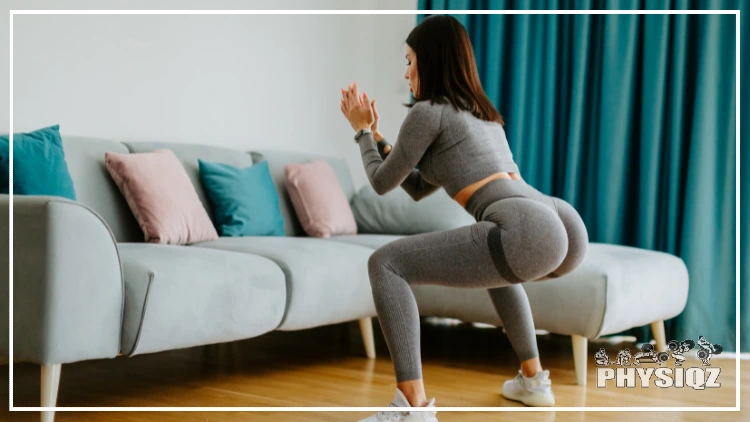
Source: avanti_photo via Canva.com10
This phenomena is especially felt in the glutes, due to slouched sitting throughout the day. As a result, there is a strong neuronal pathway formed for glute muscles.
To combat this, the brain needs additional information from the neurons to correctly activate the gluteal muscles.
Check out the suggestions below for ideas to better activate the glutes and fix the dreaded glute amnesia. The strategies below will not only help a lifter to feel their glutes more, but will also improve the results of lower glute exercises.
Work on Mind Muscle Connection
The mind and body are connected through both sensory and motor neurons, the latter being most important in terms of body movement and working out. So to help overcome glute amnesia, a person can strive to help feel the mind muscle connection.
Remember, these approaches are key when it comes to how to tone under buttocks.
Feel the muscle: Really squeeze the muscle worked during a set, or practice flexing the muscle in between sets.
Light weight or high rep: Instead of bodybuilding, which primarily uses heavy weights or low repetitions, try mixing up an exercise routine and doing high reps and light weight. This change in input will help the brain and body connect.
Watch in a mirror: This will provide the body with visual stimuli that further activates the muscle being worked.
Visualization: Similar to the mirror trick above, visualizing the muscle being targeted can further help the mind with motor recruitment.
Do Pre-Exhaust Sets With Bands To Activate the Glutes Before Compound Lower Glute Exercises
Pre-exhaustive will help the mind connect with the muscle being targeted. It’s kind of like a warm up, but for the mind muscle connection rather than just the body.
This way, the neuronal pathway is warmed up, and the mind is ready to focus on targeting that specific muscle group. The same effect can be achieved through light weights such as weighted lunges, or even body weights such as body weight squats.
Use HIIT & Cardio to Your Advantage
Cardio exercises can be a great way to activate the mind muscle connection, while also contributing to cardiovascular fitness, weight loss, and decreased body fat percentage. Finding the right cardio exercise is key.
For example, to help combat glute amnesia, using short bursts on the stairmaster or jumping exercises can jump start motor neuron firing.
Furthermore, HIIT or high intensity interval training workouts are ideal because they help the mind body connection, and have been backed by science to improve muscular hypertrophy, or more simply put size and strength.11
To complete a HIIT, do a short interval of high intensity exercise, followed by a longer interval of low intensity rest. This could look like 20 seconds of sprinting, followed by 40 seconds of fast paced walking.
Complete as many reps as possible.
Underbutt Workout: Before & After Photos, Results, & Success Stories
When it comes to motivation, before and after pictures, real results, and personal success stories can be the most helpful. Check out the results below of people who put in the work with lower glute exercises to completely transform their buttocks.
Aunty Flocks’ Glute Building Journey
Flocks has had an incredible yet realistic transformation of the glutes. For some, glutes are the hardest muscle to grow, and Flocks is very open about her previous struggles with targeting this muscle.
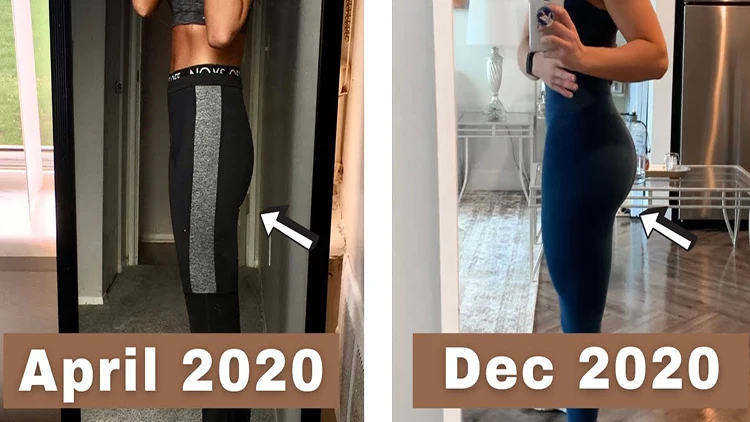
Through targeted exercises and a protein-rich diet, Flocks was able to overcome the challenges of growing her glutes. Source: Aunty Flocks on Youtube12
She found success through focusing on muscle activation, and exhaustive sets of specific glute targeting exercises like donkey kicks, glute bridges, squats and side lunges. She also found getting enough protein, such as using a protein shakes diet plans, to be beneficial.
Bronagh Townsend’s Total Glute Transformation
Through hard work and consistency, Bronagh has built her lower glutes significantly. In her video, she discusses effective methods for skinny girls to add muscle mass to their legs, finding success not only with exercises targeting the lower glutes but also with quality nutrition and adequate rest.
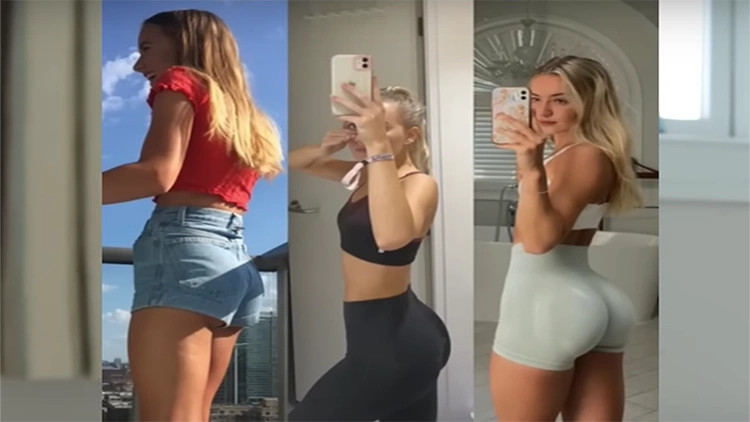
Bronagh shares her secrets to building lower glutes and gaining weight in legs for skinny girls, with consistent effort and a focus on nutrition and rest, she was able to achieve significant growth in her lower glutes. Source: Bronagh Townsend on Youtube13
A Glute Workout Guaranteed to Build a Plump Rump
If building the butt through exercises for the lower glutes is the goal, the readers are invited to use the 6-week program below. The scheme of the following program is in sets x reps format, so if the program says 3 x 12, the complete 3 sets and 12 reps of the exercise.
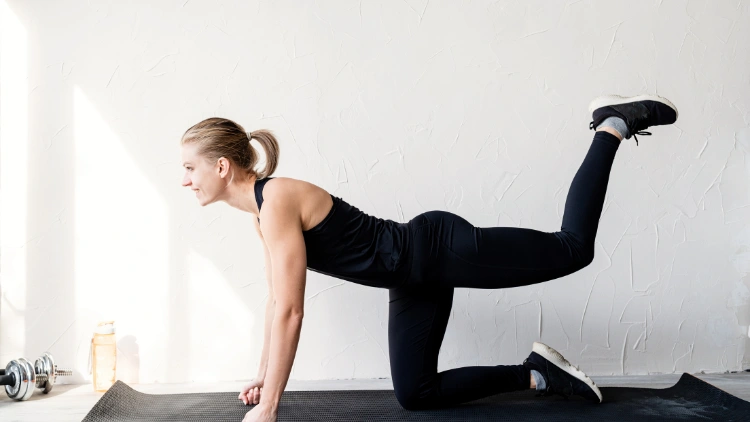
Source: Ilona Shorokhova via Canva.com14
This is adjustable depending on the person, to make sure proper muscle fatigue is achieved at the end of a set. Try to challenge the amount of weight used each week to help build size and strength.
And don’t worry, it’s okay to squat and deadlift same day.
For a full body workout routine, try using a 4 day workout split instead.
Week 1
- Day 1:
- Standing Hip Abduction – 2 sets of 8 reps
- Cable Hip Abduction – 2 sets of 8 reps
- Hip Thrusts – 2 sets of 8 reps
- Belt Squats – 2 sets of 8 reps
- Day 2 (Rest)
- Day 3 (Rest)
- Day 4 (Rest)
- Day 5 (Rest)
- Day 6 (Rest)
- Day 7 (Rest)
Week 2
- Day 1:
- Cable Hip Abduction – 2 sets of 8 reps
- Abduction Machine – 2 sets of 8 reps
- Deadlifts- 2 sets of 8 reps
- Lateral Lunge – 2 sets of 8 reps
- Day 2 (Rest)
- Day 3 (Rest)
- Day 4:
- Standing Hip Abduction – 2 sets of 8 reps
- Side Lying Hip Abduction – 2 sets of 8 reps
- Step Ups – 2 sets of 8 reps
- Hip Thrusts – 2 sets of 8 reps
- Day 5 (Rest)
- Day 6 (Rest)
- Day 7 (Rest)
Week 3
- Day 1:
- Standing Hip Abduction – 2 sets of 12 reps
- Abduction Machine – 2 sets of 12 reps
- Step Ups – 2 sets of 12 reps
- Lateral Lunge – 2 sets of 12 reps
- Day 2 (Rest)
- Day 3 (Rest)
- Day 4:
- Cable Hip Abduction – 2 sets of 12 reps
- Side Lying Hip Abduction – 2 sets of 12 reps
- Belt Squat – 2 sets of 12 reps
- Deadlifts – 2 sets of 12 reps
- Day 5 (Rest)
- Day 6 (Rest)
- Day 7 (Rest)
Week 4
- Day 1:
- Abduction Machine – 3 sets of 8 reps
- Belt Squats – 3 sets of 8 reps
- Reverse Lunge – 3 sets of 8 reps
- Day 2 (Rest)
- Day 3 (Rest)
- Day 4:
- Standing Hip Abduction – 3 sets of 8 reps
- Hip Thrusts – 3 sets of 8 reps
- Deadlifts – 3 sets of 8 reps
- Day 5 (Rest)
- Day 6 (Rest)
- Day 7 (Rest)
Week 5
- Day 1:
- Cable Hip Abduction – 3 sets of 12 reps
- Deadlifts – 3 sets of 12 reps
- Lateral Lunges – 3 sets of 12 reps
- Day 2 (Rest)
- Day 3 (Rest)
- Day 4:
- Abduction Machine – 3 sets of 12 reps
- Belt Squats – 3 sets of 12 reps
- Step Ups – 3 sets of 12 reps
- Day 5 (Rest)
- Day 6 (Rest)
- Day 7 (Rest)
Week 6
- Day 1:
- Standing Hip Abduction – 4 sets of 8 reps
- Lateral Lunges – 4 sets of 8 reps
- Hip Thrusts – 4 sets of 8 reps
- Day 2 (Rest)
- Day 3 (Rest)
- Day 4:
- Cable Hip Abduction – 4 sets of 8 reps
- Belt Squat – 4 sets of 8 reps
- Deadlift – 4 sets of 8 reps
- Day 5 (Rest)
- Day 6 (Rest)
- Day 7 (Rest)
Extra Workouts for the Lower Glutes
If you’re looking for an additional workout to target your glutes, check out the YouTube sponsored links below for the best glute-growing routine.
Beginner Butt Targeting Workout by Get Fit by Ivana: This is an ideal routine for beginners who are new to working out. Equipment is not necessary making this a convenient workout for those wanting to tone their legs and buttocks.
To up the intensity simply add resistance bands, dumbbells, or increase the amount of time spent on an exercise.
Complete twice per week, complete 60 seconds or 30 seconds each leg of the following: glute bridges, donkey kicks to fire hydrants, kneeling squats, single leg glute bridges, leg kickbacks, lying abduction, crab walk, pulsing squats, squat hold abduction, and 2 x10 reps of squat jumps.
Body Weight Booty Blaster by Move with Nichole: This routine is great because it can be done anytime anywhere. It’s a pilates based program, so in addition to glue activation it will also work on the abdominals.
Furthermore, pilates is not only effective for weight loss but it has also been found to improve muscular endurance and flexibility too.15
Starting at once per week, complete squats and pulsing squats 2 x 10, fire hydrants and kickbacks 1 x 10 each leg, clam shells and lying hip abduction 1 x 10 each leg, hip adduction and hip abduction 1 x10 each leg, and 2 x 10 hip thrusts. Make sure to stretch well at the end!
Glute Growing Lifting Routine by Krissy Cela: This program is the real deal when it comes to exercises targeting the lower glutes and activation. Ideally this routine is used with appropriate weight loading to induce muscle fatigue and, as a result, muscular hypertrophy.
Complete one to two times per week, and try to increase weight, reps, or set numbers gradually each week. Start with 60 second wall sits, 2 x 8 hip thrusts, squats, deadlifts, back extensions, and split squats.
Those wanting to improve their lower glute appearance should remember to really focus on the gluteus minimus muscle. Lifters are encouraged to try out the lower glute exercises discussed above in order to achieve the very best fitness results.
Frequently Asked Questions
Can Foot Placement Affect Which Glute Muscles Are Worked?
Yes, foot placement can help to target different glute muscles during an exercise. For example, wider stances during squats can cause leg abduction during the exercise, which will specifically hit the gluteus medius and minimus muscles.
Alternatively, a narrow placement might better target the gluteus maximus muscle.
Are Leg Presses Good for Building Lower Glutes?
Leg presses can be great for building the lower glute muscles, but foot placement is key. Keep the feet placed high on the foot pad to target the gluteal muscles, and lower on the foot pad for a more quad dominant workout.
What Exercises Lift Your Buttocks?
Any exercises that involve squatting, hinging at the hips or bringing the leg backwards. These include all types of squats such as front squats, back squats, Bulgarian split squats. Hip hinging exercises include deadlifts, hip thrusts, Romanian deadlifts etc. Lastly, glute kick backs, donkey kicks and more will isolate the glutes specifically while hip hinges and squats are more so compound movements
Why Don’t I Feel Any Lower Glute Exercises?
Glute amnesia, discussed in detail above, can be the reason why a person doesn’t “feel it” during lower glute exercises. To combat this, lifters should utilize mind-body connection strategies such as visualization, pre exhaustive reps, or muscle flexing between sets.
References
1Maridav. “Resistance Band Fitness Girl Doing Leg Workout Donkey Kick Floor Exercises with Rubber Strap Elastic. Glute Muscle Activation with Kickback for Cellulite.” Canva. Accessed 15 April 2023. <https://www.canva.com/photos/MAElPF_fHrk-resistance-band-fitness-girl-doing-leg-workout-donkey-kick-floor-exercises-with-rubber-strap-elastic-glute-muscle-activation-with-kickback-for-cellulite/>
2Lopez, P., Radaelli, R., Taaffe, D. R., Newton, R. U., Galvão, D. A., Trajano, G. S., Teodoro, J. L., Kraemer, W. J., Häkkinen, K., & Pinto, R. S. (2021). Resistance Training Load Effects on Muscle Hypertrophy and Strength Gain: Systematic Review and Network Meta-analysis. Medicine and science in sports and exercise, 53(6), 1206–1216. <https://doi.org/10.1249/MSS.0000000000002585>
3decade3d. “Glutes Medius – Anatomy Muscles.” Canva. Accessed 15 April 2023. <https://www.canva.com/photos/MAC_U4VEw9o-glutes-medius-anatomy-muscles/>
4decade3d. “Gluteus Maximus – Anatomy Muscles.” Canva. Accessed 15 April 2023. <https://www.canva.com/photos/MADerAJvWMU-gluteus-maximus-anatomy-muscles/>
5Paoli, A., Gentil, P., Moro, T., Marcolin, G., & Bianco, A. (2017). Resistance Training with Single vs. Multi-joint Exercises at Equal Total Load Volume: Effects on Body Composition, Cardiorespiratory Fitness, and Muscle Strength. Frontiers in physiology, 8, 1105. <https://doi.org/10.3389/fphys.2017.01105>
6cottonbro. “Woman in Black Sportswear Lifting a Barbell.” Canva. Accessed 15 April 2023. <https://www.canva.com/photos/MAEc8aVsuSg-woman-in-black-sportswear-lifting-a-barbell/>
7Greco AJ, Vilella RC. Anatomy, Bony Pelvis and Lower Limb, Gluteus Minimus Muscle. [Updated 2022 May 29]. In: StatPearls [Internet]. Treasure Island (FL): StatPearls Publishing; 2022 Jan-. Available from: <https://www.ncbi.nlm.nih.gov/books/NBK556144/>
8Joseph, L., Reilly, J., Sweezey, K., Waugh, R., Carlson, L. A., & Lawrence, M. A. (2020). Activity of Trunk and Lower Extremity Musculature: Comparison Between Parallel Back Squats and Belt Squats. Journal of human kinetics, 72, 223–228. <https://doi.org/10.2478/hukin-2019-0126>
9Fischer, S. C., Calley, D. Q., & Hollman, J. H. (2021). Effect of an Exercise Program That Includes Deadlifts on Low Back Pain. Journal of sport rehabilitation, 30(4), 672–675. <https://doi.org/10.1123/jsr.2020-0324>
10“Young Sporty Woman Glutes Squats Workout Morning Routine in Livi – Photos by Canva.” Canva. <https://www.canva.com/photos/MAE570Kj0FQ-young-sporty-woman-glutes-squats-workout-morning-routine-in-livi/>
11Atakan, M. M., Li, Y., Koşar, Ş. N., Turnagöl, H. H., & Yan, X. (2021). Evidence-Based Effects of High-Intensity Interval Training on Exercise Capacity and Health: A Review with Historical Perspective. International journal of environmental research and public health, 18(13), 7201. <https://doi.org/10.3390/ijerph18137201>
12Aunty Flocks. “How I Finally Grew My Glutes: Activation.” YouTube, 26 December 2020. Accessed 15 April 2023. <https://www.youtube.com/watch?v=Ez-hHMdXNvI>
13Bronagh Townsend. “How I grew my glutes *INSANE transformation* // tips for glute growth // nutrition, exercises & more.” YouTube, 7 July 2022. Accessed 15 April 2023. <https://youtu.be/PhpZwIoZkvg>
14“Young Blond Woman Working Out Doing Glutes Exercises – Photos by Canva.” Canva. <https://www.canva.com/photos/MAENp4nsar4-young-blond-woman-working-out-doing-glutes-exercises/>
15Kloubec J. A. (2010). Pilates for improvement of muscle endurance, flexibility, balance, and posture. Journal of strength and conditioning research, 24(3), 661–667. <https://doi.org/10.1519/JSC.0b013e3181c277a6>